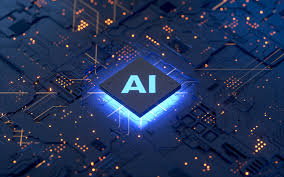Introduction
Artificial Intelligence (AI) and Machine Learning (ML) are transforming the world at an unprecedented pace. From powering autonomous vehicles and personal assistants to improving healthcare diagnostics and optimizing business decisions, AI and ML promise tremendous benefits. However, alongside these advances come complex ethical dilemmas that challenge our legal, social, and moral frameworks.
This blog explores the major ethical issues surrounding AI and ML — the concerns they raise, real-world examples, and how policymakers, developers, and society can navigate this brave new world responsibly.
1. Understanding AI and Machine Learning
Before diving into ethics, it’s important to clarify what AI and ML mean:
- Artificial Intelligence (AI): The simulation of human intelligence by machines that can perform tasks like reasoning, problem-solving, and learning.
- Machine Learning (ML): A subset of AI where algorithms improve automatically through experience, identifying patterns in data without explicit programming.
While AI and ML are powerful tools, their decision-making processes and outputs often raise ethical questions — especially when human lives and rights are involved.
2. Key Ethical Dilemmas in AI and Machine Learning
2.1 Bias and Fairness
One of the most pressing ethical concerns is algorithmic bias. AI systems learn from data — and if this data reflects historical prejudices or underrepresentation, the AI can perpetuate or amplify these biases.
Examples:
- Facial recognition systems misidentifying people of color at higher rates than white individuals.
- Recruitment algorithms discriminating against women or minorities because they were trained on biased hiring data.
- Credit scoring models denying loans unfairly due to biased financial data.
Ethical Issue: How do we ensure AI is fair, inclusive, and does not reinforce existing social inequalities?
2.2 Transparency and Explainability
AI decisions are often described as “black boxes” — their internal workings are opaque even to developers. This lack of transparency makes it difficult to understand how conclusions are reached.
Example: AI tools used in criminal justice systems to recommend bail or sentencing, where defendants may not know the basis for decisions affecting their freedom.
Ethical Issue: Should AI decisions affecting people’s lives be explainable and auditable? How do we balance complexity with accountability?
2.3 Privacy and Data Security
AI relies heavily on vast amounts of data, often personal or sensitive. This raises concerns about user privacy and how data is collected, stored, and used.
Examples:
- AI-powered apps collecting location or health data without explicit consent.
- Surveillance technologies tracking individuals without their knowledge.
- Data breaches exposing personal information.
Ethical Issue: How can we protect individuals’ privacy rights while enabling AI innovation?
2.4 Autonomy and Control
As AI systems become more autonomous — driving cars, managing financial portfolios, or even making medical diagnoses — questions arise about human control and responsibility.
Examples:
- Self-driving cars forced to make life-and-death decisions in accidents.
- AI recommending medical treatments that patients or doctors may not fully understand.
Ethical Issue: Who is accountable when AI systems fail? How much control should humans retain?

2.5 Job Displacement and Economic Impact
Automation threatens to replace many jobs, particularly those involving repetitive or routine tasks.
Concerns:
- Large-scale unemployment or underemployment.
- Widening economic inequality.
- Psychological impact of job loss.
Ethical Issue: How do we balance AI-driven efficiency with economic justice and worker rights?
2.6 Manipulation and Misinformation
AI-driven tools can create deepfakes, generate fake news, or manipulate online content, influencing public opinion and democracy.
Examples:
- Political campaigns using AI bots to spread propaganda.
- Synthetic media undermining trust in genuine news.
Ethical Issue: How can societies protect truth and maintain informed consent in the AI era?
2.7 Moral Status of AI
As AI systems become more advanced, ethical questions arise about their moral status.
- Can AI ever have rights or be considered moral agents?
- Should we treat intelligent machines with ethical consideration?
Though still largely theoretical, this debate reflects our evolving relationship with technology.
3. Case Studies of Ethical Dilemmas in AI
3.1 COMPAS Algorithm in Criminal Justice
The COMPAS tool predicts recidivism risk and is used in court sentencing decisions. Investigations revealed racial bias: Black defendants were often predicted as higher risk than white defendants, even with similar profiles.
Ethical Impact: Highlighted the danger of deploying AI without addressing fairness and transparency.
3.2 Amazon’s Recruiting Tool
Amazon developed an AI system to review resumes, but it was found to discriminate against women because it trained on data reflecting male-dominated tech hiring.
Ethical Impact: Demonstrated the need to audit AI models for bias and ensure diverse data.
3.3 Facial Recognition and Privacy
Cities like San Francisco have banned facial recognition technologies due to privacy concerns and racial bias, as these systems have higher error rates for minorities.
Ethical Impact: Brought attention to privacy, consent, and potential surveillance abuses.
4. Ethical Frameworks and Guidelines
To address these dilemmas, various organizations and governments have proposed ethical principles for AI:
- Fairness: Avoid bias and discrimination.
- Transparency: Ensure explainability and openness.
- Privacy: Protect data and consent.
- Accountability: Establish responsibility for AI outcomes.
- Human-centric design: Keep humans in control.
- Safety and security: Minimize risks and harms.
Examples:
- The European Commission’s Ethics Guidelines for Trustworthy AI
- The IEEE’s Ethically Aligned Design
- The OECD AI Principles
5. Best Practices for Ethical AI Development
5.1 Diverse and Inclusive Data
Incorporate diverse datasets that represent various demographics, reducing bias risks.
5.2 Algorithm Audits and Impact Assessments
Regularly test AI systems for fairness, accuracy, and ethical risks before deployment.
5.3 Explainable AI (XAI)
Develop models and tools that provide human-understandable reasons for AI decisions.
5.4 Data Privacy by Design
Implement strong encryption, anonymization, and user consent mechanisms.
5.5 Human-in-the-Loop Systems
Maintain human oversight in critical AI applications.
5.6 Continuous Monitoring and Feedback
AI models should be monitored continuously and updated to mitigate unforeseen biases or harms.
6. The Role of Policymakers and Society
Legal and Regulatory Approaches
Governments need to enact laws that regulate AI applications, protect citizens, and promote ethical standards.
Public Awareness and Education
Educate the public about AI’s capabilities, limitations, and risks to foster informed dialogue.
Multidisciplinary Collaboration
Ethicists, engineers, legal experts, and communities must work together to shape responsible AI.
7. The Future of AI Ethics
As AI technology evolves, new dilemmas will emerge, such as those involving:
- Artificial General Intelligence (AGI): Machines with human-level reasoning.
- AI in warfare: Autonomous weapons systems.
- AI rights: Moral and legal status of sentient machines.
The AI community must remain vigilant, proactive, and adaptable to ensure ethical innovation.
Conclusion
Artificial Intelligence and Machine Learning hold enormous promise but also pose significant ethical dilemmas that affect fairness, privacy, autonomy, and societal well-being. Addressing these challenges requires intentional design, robust regulation, and inclusive dialogue.
By prioritizing ethical principles, we can harness AI’s power responsibly and ensure technology serves humanity’s best interests rather than undermines them.









